Redundant gasholder to be demolished as New Barnet site is redeveloped with up to 200 new homes
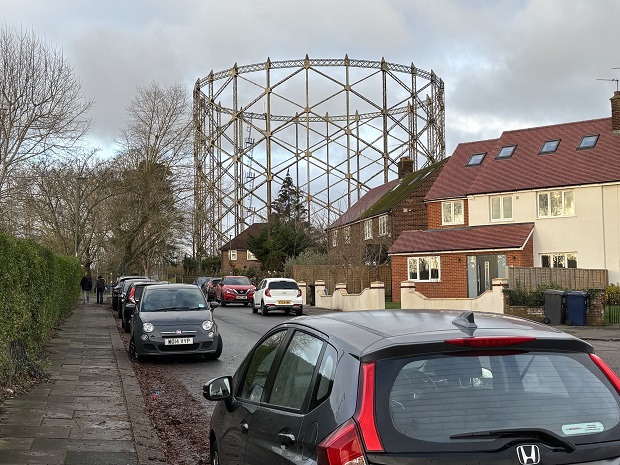
A 90-year-old cast iron framework which used to house a gasometer is to be demolished as part of a Berkeley Homes development in the northern half of the former gas works site in New Barnet.
Visible from streets all around New Barnet, the massive structure divides opinion – some think it should have been pulled down years ago while others admire its elegance and welcome its presence as a familiar landmark on the local skyline.
The gasometer, which was built in 1934, had a capacity of 2,000,000 cubic feet of gas but when the gas works closed it was decommissioned, purged of gas and collapsed to its lowest level.
The remaining 38-metre-high frame of what was originally known as a column guided gasholder has been described by National Grid Property Holdings as having “no particular historic or architectural merit” and “little, if any, heritage value.”
Berkeley Homes is consulting nearby residents before drawing up plans to develop the four-acre site with up to 200 new homes.
Under Barnet Council’s current local plan, the site has an indicative capacity of around 190 residential units.
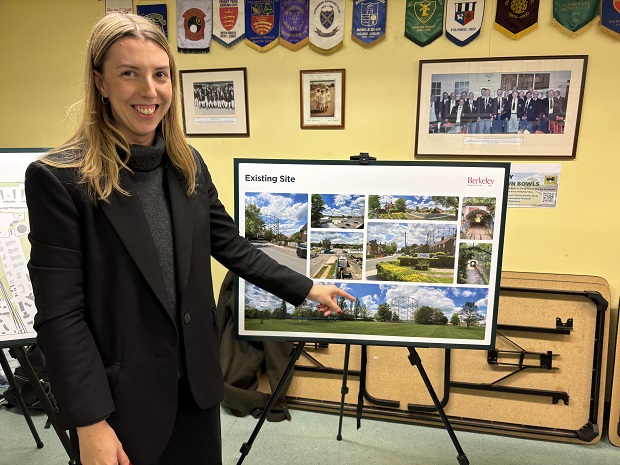
At a consultation evening, Olivia Fearon (above) of JTP architects, said that no decisions had been taken yet on whether to build flats or houses on the site, most of which is currently a depot for Cadent Gas Logistics.
Access would be via Albert Road and the main service route through the much larger development which is already underway on the southern half of the gas works site, which is to be known as the Victoria Quarter, where Fairview are building eleven blocks of flats to provide 420 new homes.
Once Berkeley Homes and their architects have considered local feedback the aim would be produce outline plans, have further discussions with residents before next summer, and then submit a planning application before the end of next year.
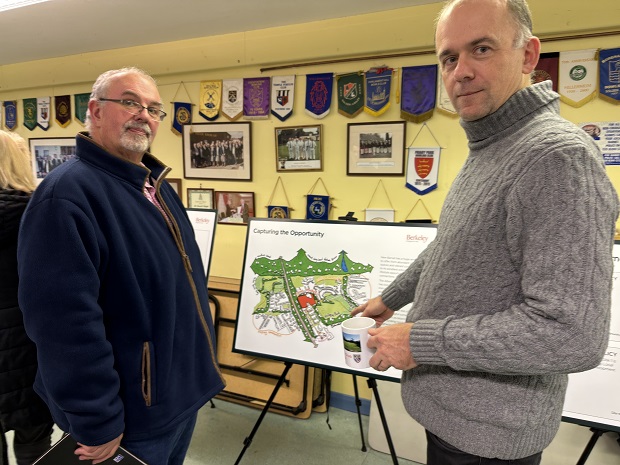
John Dix (above left), a long-time campaigner with the Save New Barnet group, who discussed the options for the development of the site with lead architect Ian Fenn, (above right) said that what New Barnet needed most of all was more family homes and not one-bedroom studio flats.
“What we want to see are new two- and three-bedroom houses which are in such short supply locally.
“New developments like this should reflect the demographics of New Barnet.
“We desperately need family homes because so many couples with young children are having to leave the area because all that seems to be available is expensive one-bedroom flats in new developments.”
Mr Fenn said that he and the rest of the architectural team at JTP wanted to hear what local people thought.
He acknowledged Mr Dix’s point that new blocks offering just studio flats, and one-bedroom flats, often appeal to investors who priced out local people.
Mr Dix said he did not think there would be much objection to the demolition of the frame of the gasholder, for which planning approval was given three years ago. It was part of a brownfield site which should be redeveloped.
One resident who lived in a house where the garden adjoins the gasholder site said she would be sorry to see the framework demolished.
“I’ve lived here for forty years, and I can almost touch the cast iron uprights of the old gasometer from the fence at the bottom of my garden.
“It has never bothered me and personally I think it looks rather beautiful, especially you see it against different skies and when the trees are in full leaf.”
Some listed cast-iron gasholder frames – such as those near King’s Cross Station – have been incorporated into new housing developments.
Architect Olivia Fearon said Berkeley Homes would have to consider what was best for the site and their plans included the demolition of the gasholder.
When the gasholder was built, it was originally operated by the Barnet and District Gas and Water Company.
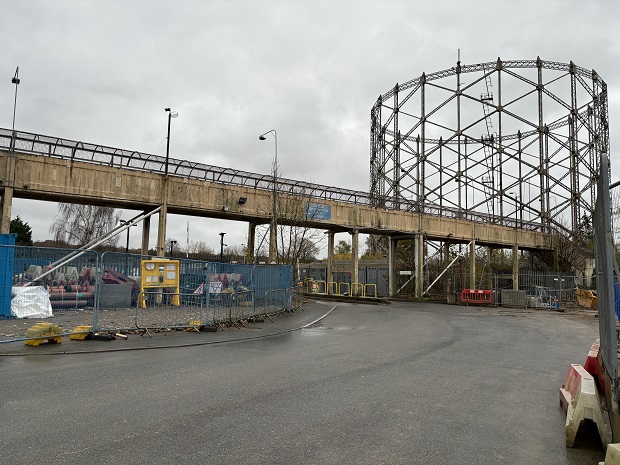
The Albert Road gas works was recorded in plans of 1867 and over the decades was extended further north alongside the main East Coast railway line.
National Grid say that a “tried and tested” method of dismantling gasholders has been developed and the work would take approximately 12 months. Over 90 tons of cast iron and steel would be recycled.
5 thoughts on “Redundant gasholder to be demolished as New Barnet site is redeveloped with up to 200 new homes”
Comments are closed.

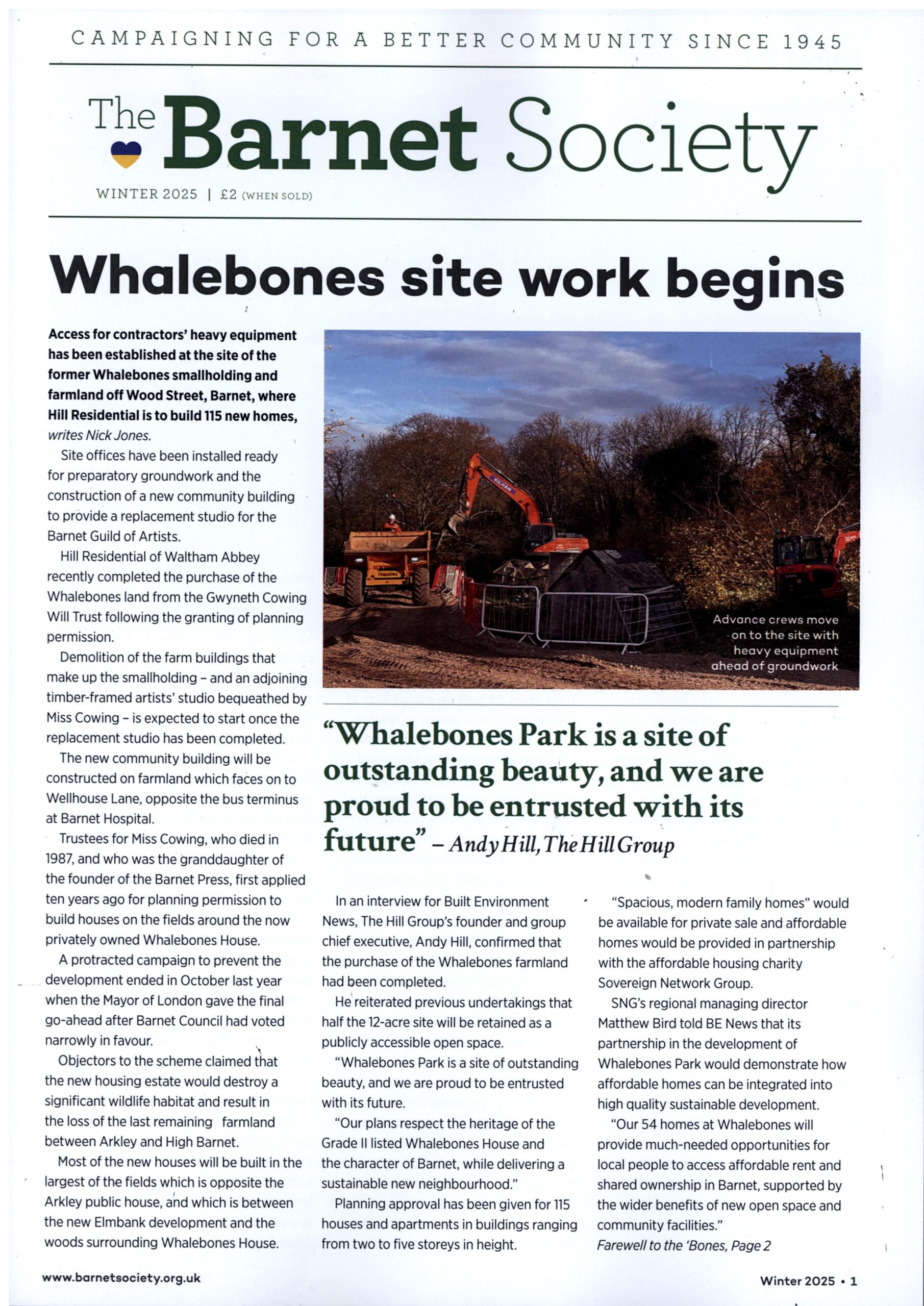
https://youtu.be/fUv93PpxDJg?si=UgVq3RRMOXPu6Voj
And where are the plans for new water reservoirs, new electrical sub-stations, new telephone exchanges, new sewage treatment works, new schools, (etc. etc.) to cope with this many new homes?
I question whether projects of this scale are genuinely necessary. There are countless properties in and around Barnet that have been left empty for years. Where we are in High Barnet I can count dozens that I walk passed every day that are either new homes that have yet to be sold, or houses that have had “for sale” or “to let” signs outside them off and and on for years. Or properties that have been abandoned: ironically a lot of them council owned, the nurses home in Bells Hill springs to mind.
How about we sort that out before committing to building any new homes?
I’d also like to see the stats regarding whether we’re using the homes we already have in a responsible way (in terms of size vs the number of occupants, etc.).
Agreed. Even though it is these sorts of sites that should be utilised for schemes like this and certainly not the green belt (or this entirely made up new term they’re calling “grey belt”, which seems to be whatever they need it to be to get passed planning red tape) these plans always prioritise cramming in as many new homes as possible, which is why they tend to favour building flats, and they never build properties in-keeping with the area so these new developments always end up being eyesores and completely change the aesthetic and character of entire towns.
As you quite rightly say Jp, it’s always the same story. Just look at the proposals for the redevelopment of The Spires, or the High Barnet tube station car park. This just feels like a carbon copy.
How about for a change not being greedy, and instead build only a handful of homes in the same style as what’s already there and reserve them for locals?
Mr Dix is completely correct, we need affordable family houses built. This developer will never build these as it’s number one aim is to generate profit for their investors. How many times have we seen these slick pr presentations,from which these promises never materialise. Local councils need to use sites like these to build large numbers of affordable homes. These large property developers will never solve the housing crisis as it is not in their interest to do so.The definition of insanity is doing the same thing over and over and expecting different results.